Support us
Help us to help the Alps and all its magnificent biodiversity by making a donation today.

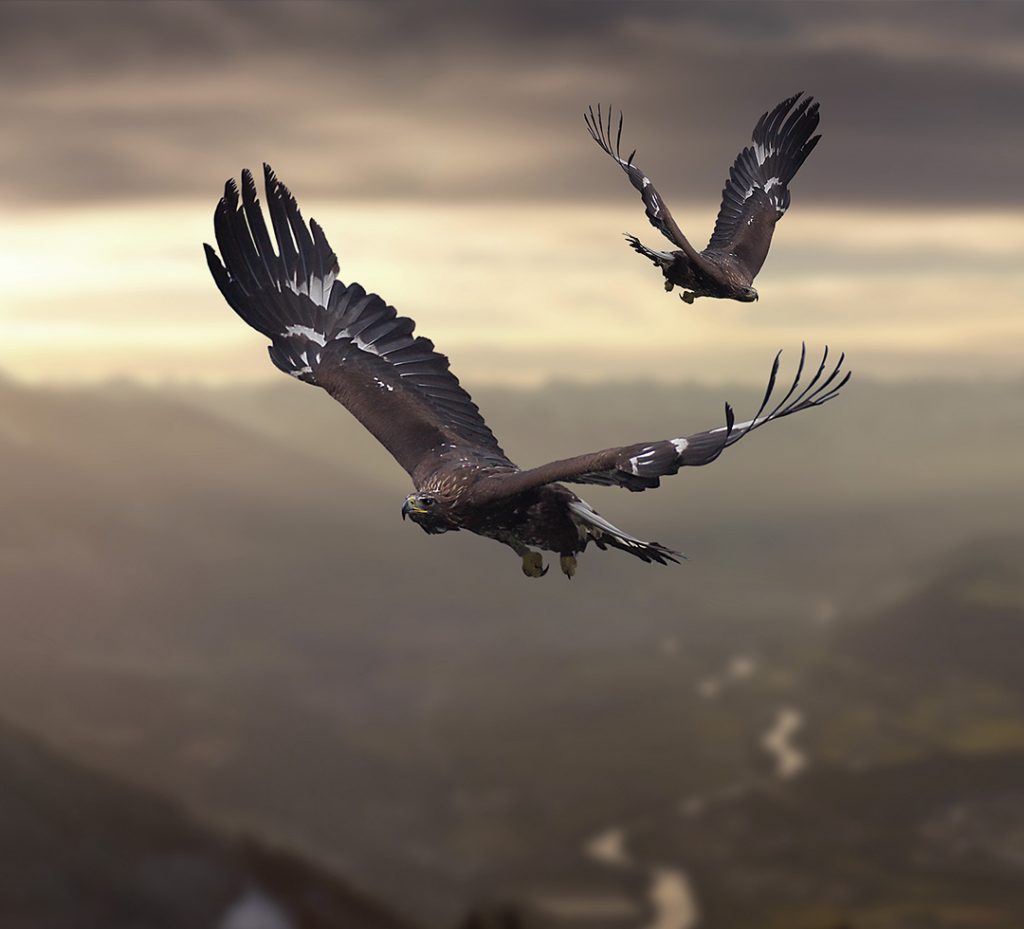
The number of animal species in the Alps is thought to be around 30,000, although the exact number is unknown. Alpine species from ungulates to reptiles and large predators are however amazing in that they have found ways to survive in some of the world’s harshest possible living conditions.
Though typical Alpine animals continue to exist in the Alps, many of their populations have been reduced in size and cut off from each other. After near extinction, a small population of Alpine ibex survived in Gran Paradiso National Park in the Italian Alps and individuals from this group were re-introduced to other parts of the Alps. Able to climb to steep slopes where the snow slides off and food can be found, the latter have reconquered much of their Alpine territory.
residents in the Alps
annual visitors
decrease in glacier volume
since 1850
residents in the Alps
annual visitors
decrease in glacier volume since 1850
Species live in the Alps
Couple of eagles in the Alps
Area of the Alps
Other animals, such as the famous Alpine marmot, hibernate during the coldest months of the year, while still others, such as the Alpine chamois and rock partridge migrate over fairly great distances or descend to lower altitudes to avoid the winter cold. In another means of survival, the Alpine salamander is the only European amphibian to give birth to fully developed young, while birds and mammals have thicker feathers or pelts and their feet or paws that have adapted to walking on snowy surfaces. The mountain hare, the stoat, and the ptarmigan change their coats from brown to white in winter to mislead predators.
Alpine lakes and glacial streams all contain highly specialized species which are part of a diverse and characteristic freshwater fauna collection. However, the high sensitivity of these organisms to global warming and human activities threatens their survival.
The fate of the three large Alpine carnivores, the lynx, the bear and the wolf, is a clear demonstration of how close certain Alpine mammals have come to being wiped out from the Alps. Happily, like the White-tailed eagle, through policy changes and reintroduction projects, some of these species are making a come-back.
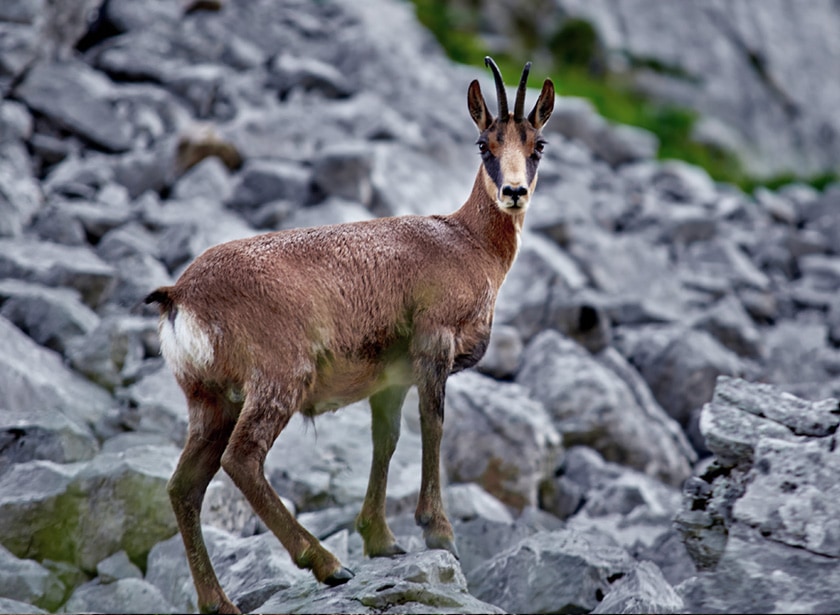
The chamois is perhaps the best-known alpine mammal. Thanks to its superb agility, it is able to navigate its way through the rocky landscape with remarkable ease. In Swiss folklore, the chamois is often placed under the protection of mountain spirits, but that has never put off human hunters. The total chamois population, in both the Alps and the Jura, is currently estimated at around 95,000.
The ibex is a skilful climber, even on the steepest inclines. The rocky slopes of the Alps are its preferred habitat. In former times, it was greatly prized for its medicinal powers. Such was the demand for ibex-based cures that the animal had been hunted to extinction by the 19th century. Between 1920 and 1930, Graubünden reintroduced the ibex; its image now adorns the canton’s flag and coat of arms. The ibex has also been reintroduced in the cantons of Valais and Bern. The total population is currently estimated at about 15,000.
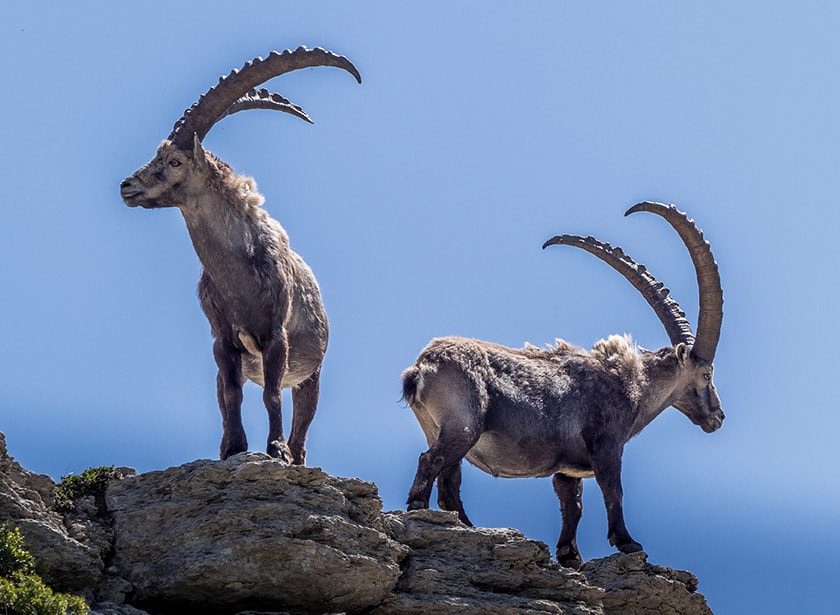
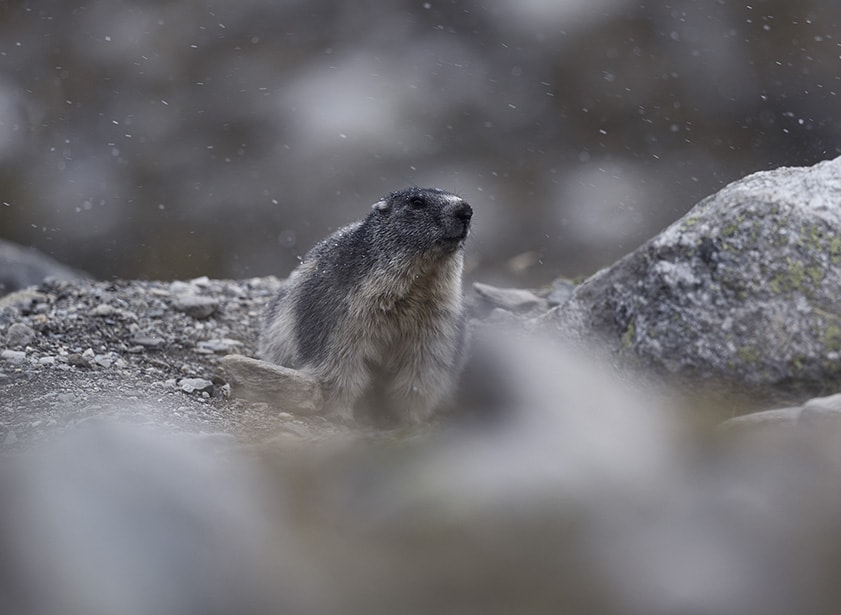
Marmots live in family groups of 15 or so members. They dig their burrows in open meadows and only come out to feed. Since they hibernate for about six months, they spend much of the summer feeding in order to build up their winter fat reserves. Marmots are easy to spot during the summer months. They are even easier to hear due to the high-pitched whistling noise they make when they feel threatened. Originally marmots were found only in the Alps, but have been introduced in a few places in the Jura as well.
The black salamander, or alpine salamander, is the only amphibian in Europe to give birth to live young. For female salamanders living above 1,400m, the gestation period can last for as much as three years. The amphibian prefers a habitat that is moist and higher than 3,000m, such as alpine forests, scree slopes and alpine meadows. The alpine salamander can grow up to 16cm and feeds mainly on beetles, spiders and centipedes.
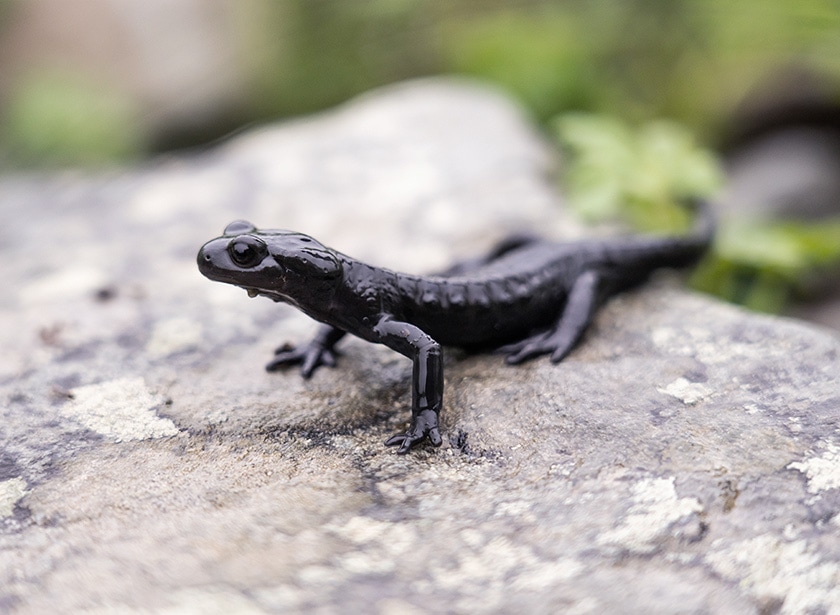
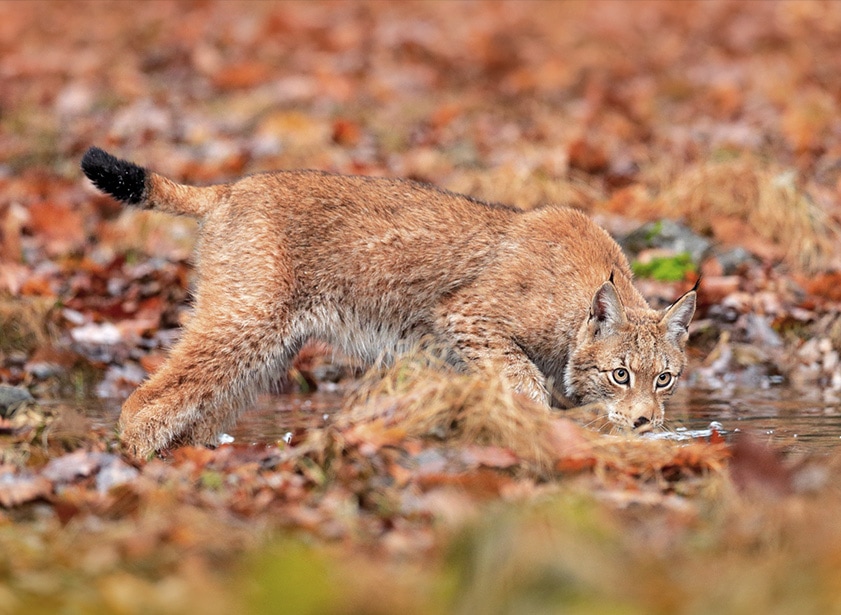
The lynx is the largest wildcat in Europe. It plays an important role in the ecosystem by hunting small ungulates like deer and chamois. There are currently around 300 lynx living in the Swiss forests. Although the population is now stable in Switzerland, the big cat remains an endangered species in central Europe.
The wolf returned to Switzerland in 1995. Since then, the population has grown year on year. There are currently around 80 wolves spread over a dozen cantons. The animals migrate from Italy and France, where population numbers are on the rise. The first pack in Switzerland was spotted in 2012. Since then, seven more packs have formed. Switzerland is not actively seeking to reintroduce wolves. However, given that the animals have migrated naturally, the authorities have put a plan in place to respond to their return.
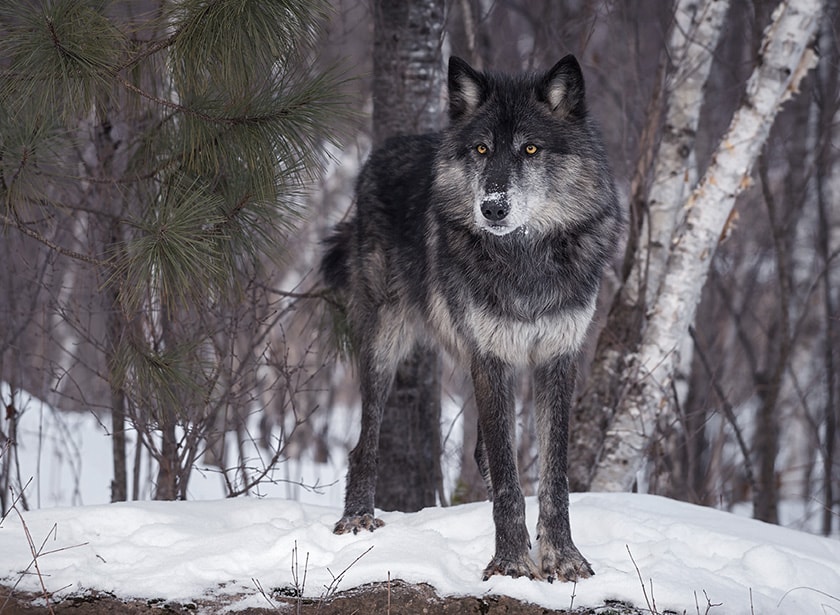
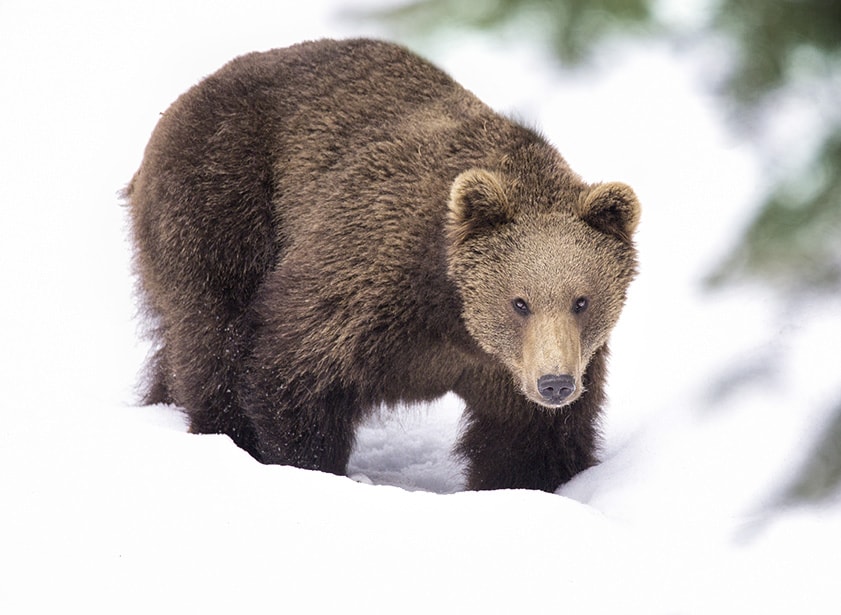
For over a century, there were no wild bears in Switzerland. That changed a few years ago. Since 2005 bears from the Italian Adamello Brenta National Park in Italy have steadily made their way to Switzerland. Unlike Austria and Italy, Switzerland has no formal reintroduction programme. The Swiss comeback of the plantigrade is solely due to natural migration.
Help us to help the Alps and all its magnificent biodiversity by making a donation today.
Lorem ipsum
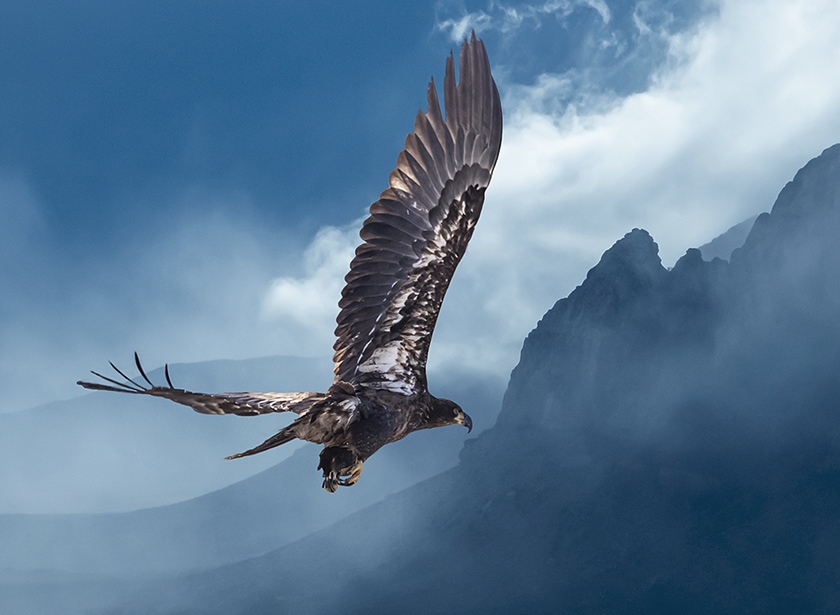
The golden eagle is one of Switzerland’s biggest birds of prey, with a wing span of up to 2 m. It feeds mainly on ground-living mammals and birds, especially hares, marmots and foxes. They have excellent eyesight: research has found that they can see a hare one kilometre away. The golden eagle lives at altitudes of between 1,500 and 3,000 m. They pair for life, and each couple has a territory of between 50 and 100 km2. Switzerland is thought to have about 300 breeding pairs.
The bearded vulture takes its name from the black bristles hanging at the base of its beak. It is not only the largest bird in the Alps, thanks to an average wing span of 2.8 m, but it is the only species of vulture that has mastered the art of eating bones. The increasing scarcity of its food sources coupled with persecution by humans, who believed it took lambs, and even babies, led the bearded vulture to disappear from the Alps in the latter part of the 19th century. A reintroduction programme was launched in the 1970s, involving not only Switzerland, but also Austria, France, Germany and Italy. The bird of prey can once again be found across the Alps. The total population is currently estimated at 220.
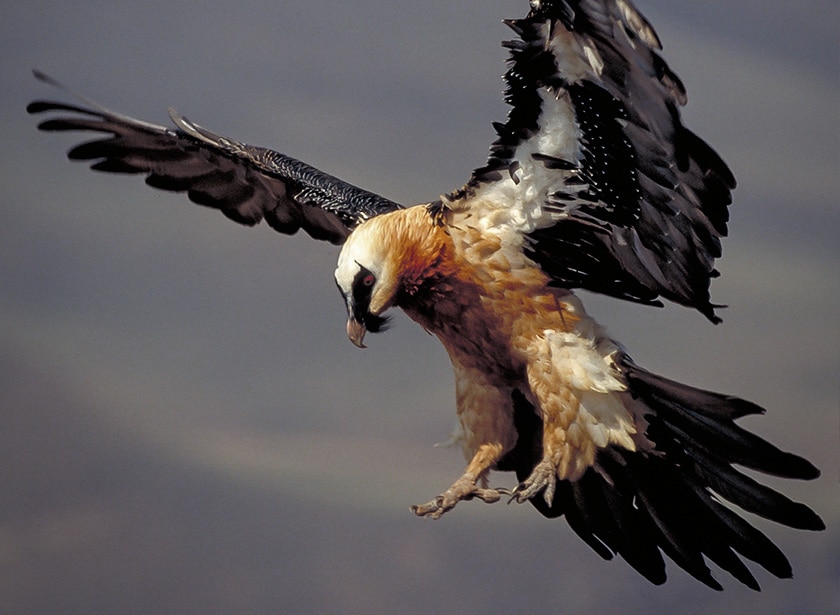
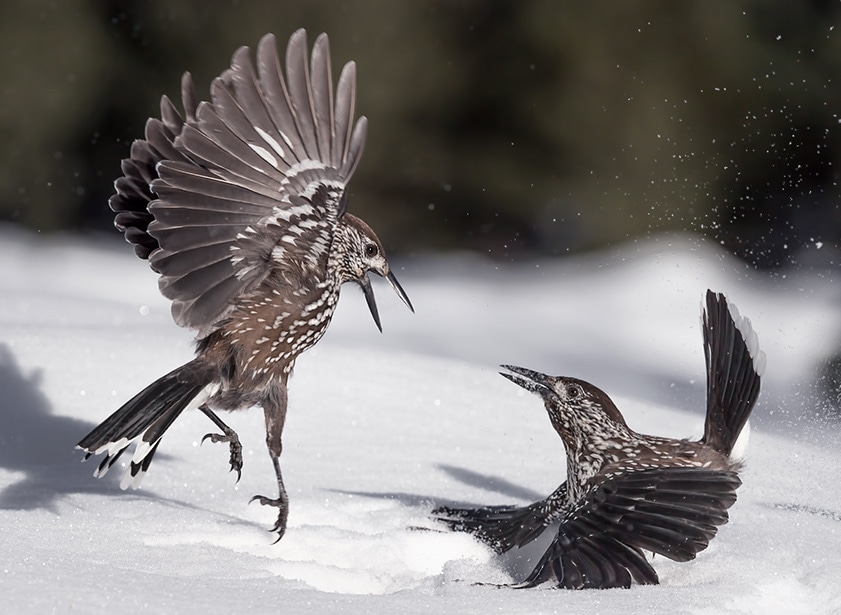
The spotted nutcracker is only 30 cm long and weighs between 150 and 210 grams. Higher elevations are its preferred habitat. In the Jura mountains, it is commonly found at altitudes of 700 m and higher. In the Alps, it lives at heights of 1,000 m or more and even as high as the tree line. In winter, it digs holes up to 130 cm deep in the snow to store its provisions. The spotted nutcracker plays a vital role in the life cycle of the Swiss stone pine, a conifer which grows in the central Alps at altitudes of over 1,100m. In winter, it feeds on the pine seeds from its cache buried in the forest. Any seeds that are left uneaten at the end of winter can then germinate in spring and produce the next generation of these fragrant conifers.
With its bluish black plumage and lyre-shaped tail, the male black grouse is an eye-catching bird. The female is smaller and its feathers are reddish brown. The natural habitat of the black grouse is subalpine areas, at elevations of between 1,200 and 2,200 m. In winter, it digs a sort of igloo in the powdery snow where it remains sheltered from the extremely low temperatures outside. Its plumage is an excellent insulator and the fleshy bristles that grow along the side of its toes help the grouse to move in the snow. It feeds on a variety of flowers, fruits, buds and heather. In winter, pine and fir needles also feature on its diet.
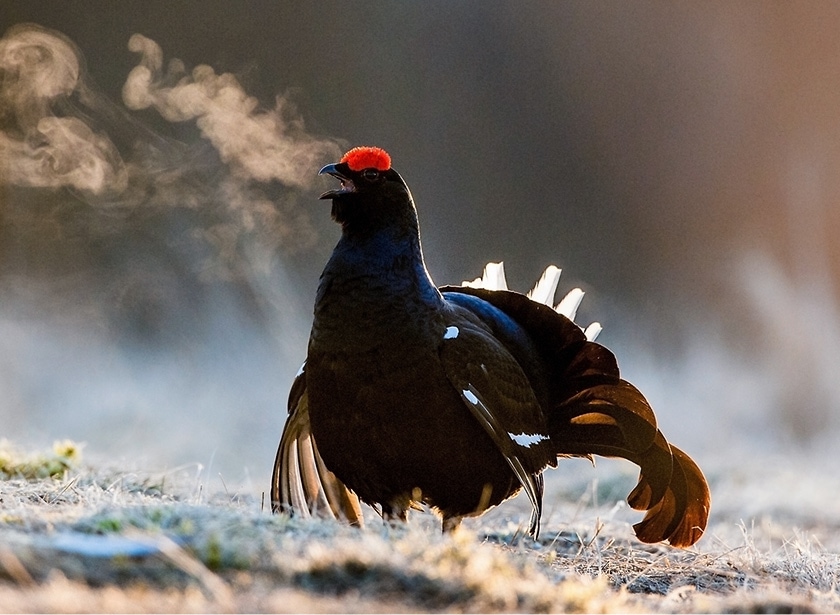
| Cookie | Duration | Description |
|---|---|---|
| cookielawinfo-checkbox-advertisement | session | Set by the GDPR Cookie Consent plugin, this cookie is used to record the user consent for the cookies in the "Advertisement" category . |
| cookielawinfo-checkbox-analytics | 11 months | This cookie is set by GDPR Cookie Consent plugin. The cookie is used to store the user consent for the cookies in the category "Analytics". |
| cookielawinfo-checkbox-functional | 11 months | The cookie is set by GDPR cookie consent to record the user consent for the cookies in the category "Functional". |
| cookielawinfo-checkbox-necessary | 11 months | This cookie is set by GDPR Cookie Consent plugin. The cookies is used to store the user consent for the cookies in the category "Necessary". |
| cookielawinfo-checkbox-others | 11 months | This cookie is set by GDPR Cookie Consent plugin. The cookie is used to store the user consent for the cookies in the category "Other. |
| cookielawinfo-checkbox-performance | 11 months | This cookie is set by GDPR Cookie Consent plugin. The cookie is used to store the user consent for the cookies in the category "Performance". |
| elementor | never | This cookie is used by the website's WordPress theme. It allows the website owner to implement or change the website's content in real-time. |
| PHPSESSID | session | This cookie is native to PHP applications. The cookie is used to store and identify a users' unique session ID for the purpose of managing user session on the website. The cookie is a session cookies and is deleted when all the browser windows are closed. |
| viewed_cookie_policy | 11 months | The cookie is set by the GDPR Cookie Consent plugin and is used to store whether or not user has consented to the use of cookies. It does not store any personal data. |
| Cookie | Duration | Description |
|---|---|---|
| wp-wpml_current_language | session | This cookie is used by WPML, the language plugin used on this website, to allow pages to be displayed in the language selected by the user. If it is not active, the user will have to change the language manually each time he/she switches pages. |